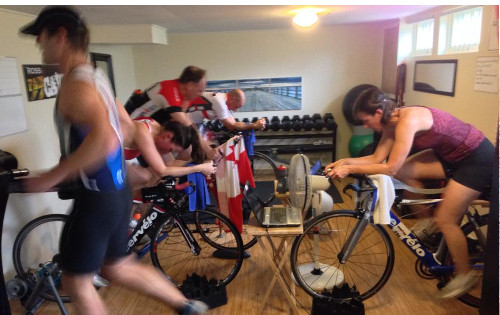It’s that time of year again, as athletes end their current season and begin to plan their training and racing for next season. Inside the team we are now fielding many season planning questions and the Big One is:
Question: “Given my race schedule for next season, when should I start my OutSeason® Training Plan?” Answer: You should start the OutSeason® when your head is ready to commit to 14 weeks of focused, hard work.
This is a function of the nature of the season you just ended, the length of your current season, and your own personal constraints during the winter months.
What is the OutSeason?
This is the critical time of year when we build your power and pace at threshold on the bike and run. Because you have minimal volume goals with no big races on the schedule, we can fill your extra time with recovery. This means we can really push the intensity of the workouts and help you establish new levels of fitness on the bike and the run. The net being that when you return to the open road next year, your training partners won’t know what happened to the “old” you that no longer rides or runs with them.
Your Current Season
If it’s been a long one, you definitely want to take some unstructured downtime to recover your body and reset your head. This includes Ironman® Canada, Louisville or Wisconsin, and especially the late season races of Ironman® Kona, Florida, Arizona, or Cozumel.
Access Our Insider Triathlete Email Series
Why rest, you ask?
Because our OutSeason® training plans are tough. We’re going to ask you to a lot of hard work. You definitely want to be a mental place where you are ready and eager to do that work, not feeling like you have to do the work now because you have race on Date X in 20xx. Unstructured is just that — do what you want to do, staying active, maintaining your running frequency, etc, but consider not training with a scheduled training plan. Again, your priority is to reset your head before diving into the hard work.
The Length of Your Current Season
If you’re racing a late race this year, you want to err on the side of starting your OS training later rather than sooner. More importantly, definitely want to break your next season into smaller, more manageable chunks. The idea is to move from short term goal/race to short term goal/race, vs putting your feet on the floor at 5:30am in December thinking you are training for Florida next year. If you try the latter approach you will be insane by May, we promise.
Your Personal Constraints
When does the weather sentence you to the drainer or dreadmill? How far into next season will you be on those damn things? What are your work and/or family commitments during holidays and winter months? Training time during the Winter can be very costly — indoors, in the cold/dark, shoehorned in around holiday commitments, occurring months and months before your races next season, etc. Be realistic about these personal costs and pick a start date for your OutSeason® that reflects this assessment.
“But what about my goal race of the Podunktown 70.3® on April 15th? How does that affect my OS start date?”
Look for us to discuss transitioning from the OS to training for your A-race(s) next season in an upcoming blog post. But, nn short, we’ve managed the back end of the OS — how to integrate that with the rest of your season, how to transition you to your A-race plan — a thousand times. We have/are an app for that! But what is much more important is you choosing the best OS starting date for you, based on the three bullets above. Don’t worry about what means on the back end. That’s easy to manage.
OutSeason® Start Date Considerations and Recommendations
Within TeamEN we start the OS on two set dates to get massive numbers of athletes starting the same plans at the same time. This helps to maximize the accountability and mojo of the Team:
- November OutSeason® (NovOS) – will start on either the last Monday in October or the first Monday in November. For athletes who finished their current season a few weeks/months before the start of the NovOS and are ready to commit to the work.
- January OutSeason® (JanOS) – will start the first Monday in January. For athletes who finished their season in November and/or have very late races this year.
Why doesn’t the team have December and February OS Groups?
Historically, December is just a crappy time of year to begin the OS, as everyone experiences a LOT of training friction over the holidays. More often than not, DecOS athletes have had to hit the reset button and join the JanOS crew. And FebOS just doesn’t get a lot of interest and these athletes have missed out on the group mojo opportunities that accompany the larger OS groups. But probably the most important takeaway from all of this is: When to start the OS is NOT a function of when your A-race for next season is. Rather, it’s a function of where your head is at. Before you jump into the OS, ask yourself:
Is my head in a place right now where I can commit to 14wks of solid work?
If the answer is no, push your OS start date back and don’t worry about what that means on the back end of your OS plan and how that affects the start of your A-race plan. We’ve managed that a thousand times. Getting the front end right is more more important! Did you like this post? Sign up for our Weekly Update Newsletter so you don’t miss post like this and much more from Endurance Nation.



Leave a Reply